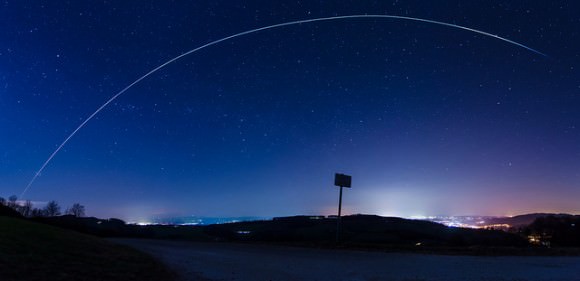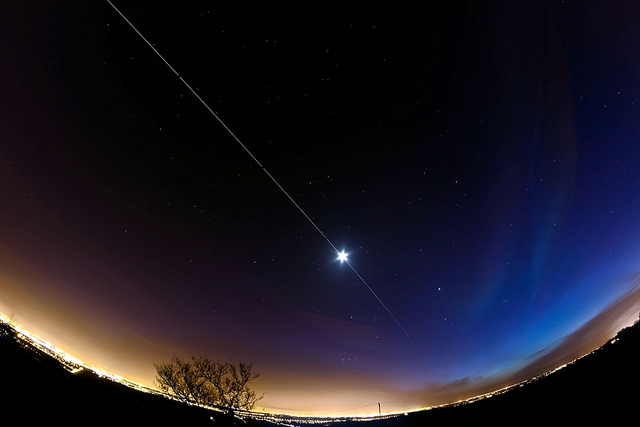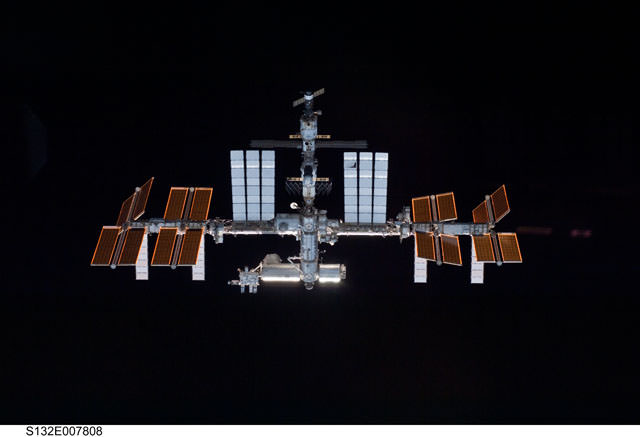What a great image! Astrophotographer Dave Walker combined seven 30-second shots of the ISS as it cuts through the sky, and it appears to slice right through the Moon! Dave used a a Canon 600D, Samyang 8mm fish-eye lens, and Vixen Polarie.
Now through the end of April provides some great sighting opportunities in the northern hemisphere for seeing the International Space Station as it flies overhead — and over your backyard! Some evenings there are even two passes. See below for another great panorama of an ISS pass, as well as information on how to find out when you can see it. It’s always an amazing sight!

NASA has a Skywatch page where you can find your specific city to look for satellite sighting info.
Spaceweather.com, has a Satellite Tracker Tool. Just put in your zip code (good for the US and Canada) to find out what satellites will be flying over your house.
Heaven’s Above also has a city search, but also you can input your exact latitude and longitude for exact sighting information, helpful if you live out in the country.
Want to get your astrophoto featured on Universe Today? Join our Flickr group or send us your images by email (this means you’re giving us permission to post them). Please explain what’s in the picture, when you took it, the equipment you used, etc.


